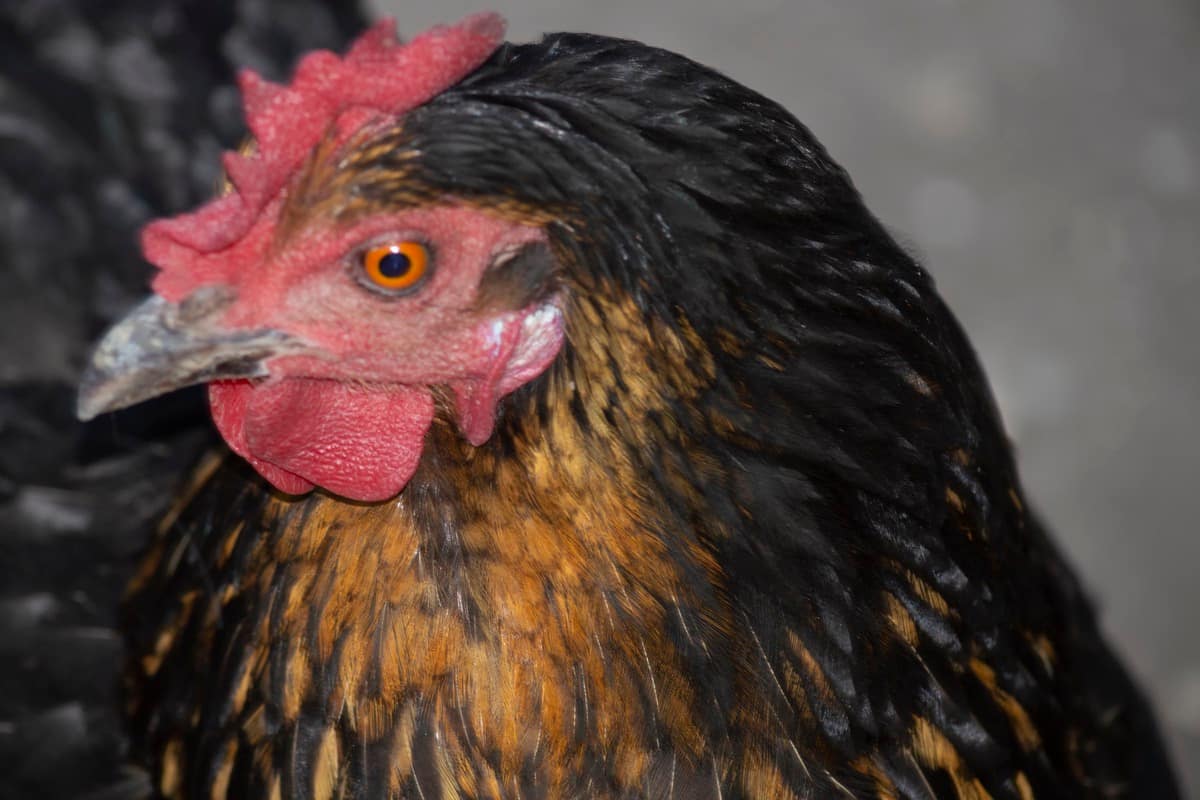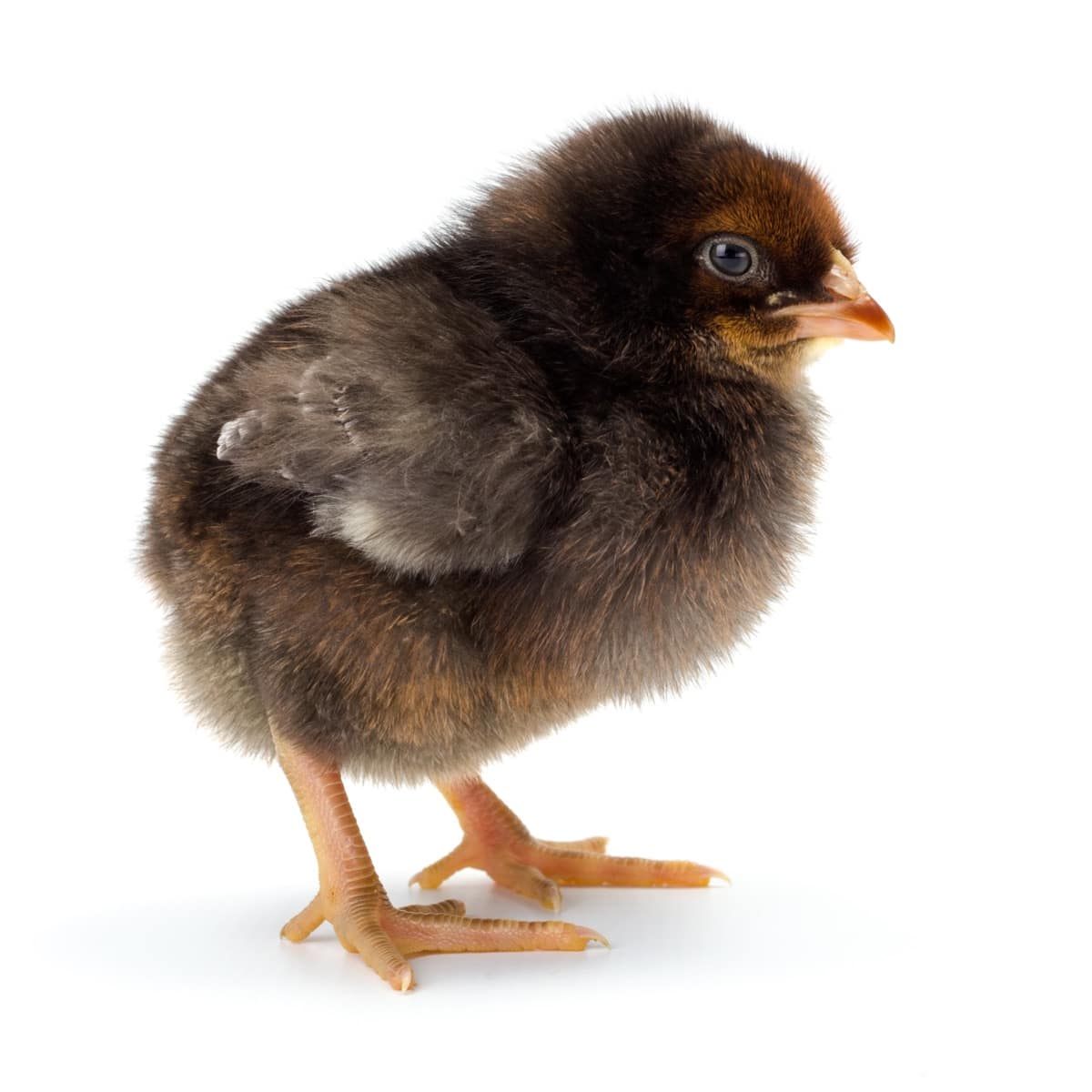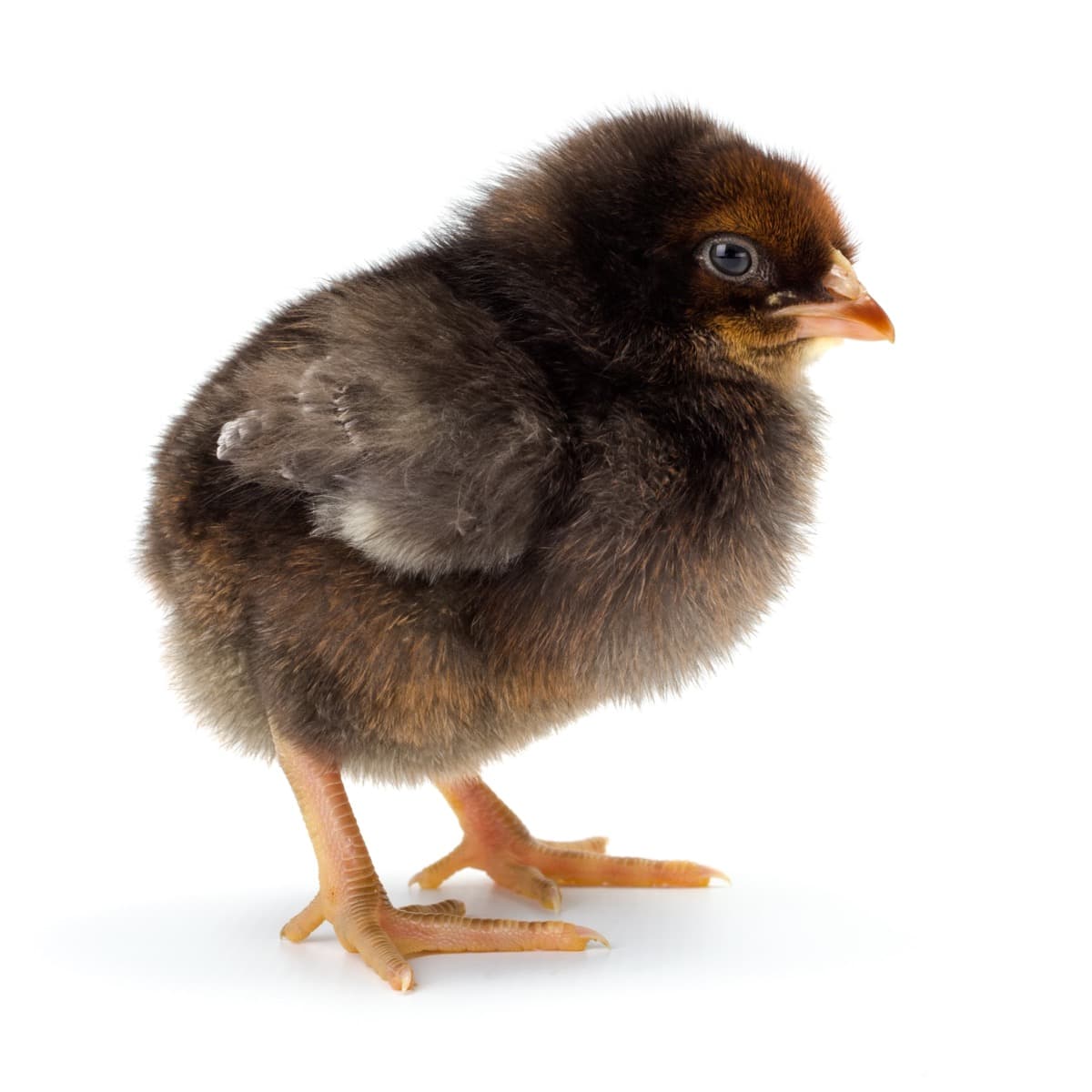Introducing the Black Star Chicken, a versatile and hardy breed that lays eggs and produces meat. It is a cross between a Rhode Island Red and a Barred Plymouth Rock with distinctive black and white coloring and a large body frame. Their foraging skills are excellent, and they love to do it. When allowed to roam freely, they will find and eat insects and plants they are interested in. Get ready to learn everything you want to know about this super breed and why it’s so admired.

History of the Black Star Chickens
In the aftermath of World War II, a mix of efforts was made to lay many eggs to meet the demands of post-war food production. There was not enough rationed food due to returning troops, refugees, and an expanding US population. To address the food shortage, poultry experts crossed and recrossed carefully selected breed combinations to produce sturdy hens that lay abundantly.
Among the successful breeds made then was the Black Star, which proved the most feasible option. The Black Star chicken is a crossbreed between a New Hampshire or Rhode Island rooster and a Barred Plymouth Rock hen. Due to the cross, the hens consistently laid large amounts of eggs. Until the 1950s, the Black Star was one of the top chicken breeds for industrial egg production. Over the years, the Black Star has remained a backyard favorite and one of the top egg machines.
Black Star Chicken Appearance
- As their name suggests, Black Star males and females wear primarily black coats, making them instantly recognizable. In addition, they have an upright carriage with a tail carried at a lively angle.
- A black star chicken is a breed between a large and a medium chicken. The hackle runs from the breast to the tail and is black with rust to golden flecks.
- There is a noticeable contrast between the plumage of males and females of the Black Star.
- In addition to having mostly black feathers, they also have red to gold flecking on their breasts. Rust-colored designs come in a variety of colors and are often iridescent.
- As males mature, they will look very different from females with white dots on their heads. They will have a similar pattern to Barred Rocks when they feather out.
Black Star Egg Production and Broodiness
Black Star chickens produce many eggs, one of its greatest benefits. The Black Star hen can lay around five eggs a week, around 300 eggs yearly. There are brown eggs that are large or extra-large in size. It’s no wonder they’re called egg-laying machines. It is rare for Black Stars to stop laying eggs unless they are allowed to go broody.
The process will also be slowed by molting. However, temperature and time of year do not play a significant role in egg-laying. Black Stars become mature around 20 weeks of age. Around this time, they begin laying eggs and continue to lay eggs until they reach maturity. The egg-laying of Black Star chickens begins to slow after two years of age, like that of many prolific egg layers. The number of eggs they lay will still increase each year, but you can expect a 20% decrease after the second year.
Black Star Chicken Hardiness
Chickens like these are extremely hardy. As with Orloff chickens, their feathers are tightly packed on their bodies, allowing them to withstand cold weather. Chickens of this species do well in hot climates since they easily adapt to them and do well even in such conditions. They will do well when raised in confinement. They will also do better when raised in the backyard since they love to forage. If they can venture out, it will allow them to supplement their diet with worms and insects. Additionally, they are biological pest control mechanisms that provide relief.
Housing Your Black Star Chicken
The Black Star flock is generally low-key, so you have various housing options. Choosing a piece of land dedicated to chickens is the first step. The next step is to divide the space into two major areas,
- A grassy area should be where the flock can stretch its legs and forage.
- They need a covered area to lay eggs, sleep, and seek protection.
In case you missed it: The Minorca Chicken Facts: Egg Laying, Broodiness, and Temperament

Chicken homes can be fenced around or enclosed like cages. You may consider tighter, more secure fencing with an overhead barrier if predators are an issue. The overhead protection also prevents your birds from flying away. Even though you don’t have to enclose your flock completely, a coop will shelter them from the rain and snow. Additionally, hens may be more productive if they have a safe place to lay eggs.
Feeding Requirements For Black Star Chicken
A hatchling feed in a crumble formula should be given to baby chickens. It is easier for their tiny beaks to pick up the feed this way. Until eight weeks of age, oyster shells and calcium supplements should not be used. In young birds, high calcium levels can cause kidney problems. The nutrition requirements of birds change when they reach maturity at 20 weeks and begin to lay eggs. Feeding a backyard flock a balanced laying feed with 16% protein can be beneficial. You can add calcium-based grit to the diet if you want extra-large brown eggs.
Common Illness Issues in Black Star Chicken
As with other chicken breeds, Black Stars can suffer from the same health problems. Your chickens can become infested with mites, lice, and other parasites. Maintain a clean coop and run. Boost your chickens’ immunity by adding apple cider vinegar to their water supply. In small amounts, crushed garlic can also protect your chickens from harmful bugs. Vaccines are also essential.
Routinely bringing your chickens to a veterinarian could protect them from more dangerous diseases, such as fowl cholera. Last but not least, Black Star chickens can adapt to temperature changes but should not be exposed to cold temperatures. In the summer, Black Stars need plenty of shade and fresh water. In cold climates, they will need insulation in their coop, especially around nesting boxes. You will need to dry your chickens if they get cold and wet gently.
In case you missed it: The Best Way to Keep Chickens Laying Eggs During the Winter

Conclusion
Finally, the Black Star Chicken is a superstar layer with excellent egg production. Poultry keepers love these birds because of their striking appearance, friendly nature, and high egg-laying capacity. Black Star Chickens are a great choice for backyard flocks, whether you are a novice or an experienced chicken owner.
Note: The images presented in this post are intended solely for representation purposes. The images are meant to serve as visual aids and should not be relied upon as accurate representations of their real-life counterparts.
- Feed Your Flock for Less: Top 10 Tips to Save on Chicken Feed
- Ultimate Guide to Ossabaw Island Hog: Breeding, Raising, Diet, and Care
- Hatching Answers: The Top 10 Reasons Your Chickens Aren’t Laying Eggs
- Eggs and Economics: Breaking Down the Cost of Raising Backyard Chickens
- Defend Your Greens: Proven Methods to Keep Iguanas Out of Your Garden
- Ultimate Guide to Cinnamon Queen Chicken: A Comprehensive Guide for Beginners
- Ultimate Guide to California Tan Chicken: Breeding, Raising, Diet, Egg-Production and Care
- Ultimate Guide to Marsh Daisy Chicken: Breeding, Raising, Diet, and Care
- 10 Types of Chicken Farming Businesses You Can Start for Profits